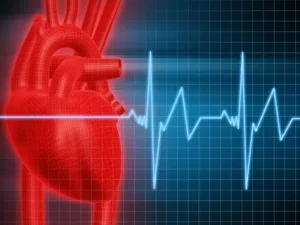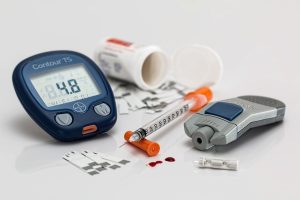Introduction
In today’s fast-paced world, being able to identify potential risks and red flags in various aspects of life is paramount. Whether it’s in business, health, or personal relationships, recognizing warning signs can save us from significant trouble down the road. There is 4 High-Risk Conditions When it comes to health, in particular, being able to spot indicators of high-risk conditions early on can be life-saving. In this comprehensive guide, we’ll delve into four high-risk conditions and the red flags associated with each. Explore More About (Food-Related Illness)
1. Cardiovascular Diseases: The Silent Killers of High-Risk Conditions
Cardiovascular diseases (CVDs) remain the leading cause of mortality worldwide, claiming millions of lives each year. Often dubbed as “silent killers,” CVDs can manifest without any noticeable symptoms until a major event like a heart attack or stroke occurs. However, there are several red flags 4 High-Risk Conditions that individuals should be aware of:
Signs to Watch Out For:
- Chest Pain or Discomfort: Unexplained chest pain or discomfort, especially if it worsens with activity or stress, could be indicative of underlying heart issues.
- Shortness of Breath: Difficulty breathing, particularly during physical exertion or when lying down, may signal heart or lung problems.
- Irregular Heartbeat: Palpitations or irregular heart rhythms warrant medical attention as they could indicate arrhythmias or other cardiac issues.
- Swelling: Persistent swelling in the legs, ankles, or abdomen may be a sign of heart failure or vascular problems.

2. Diabetes: Managing the Sweet Menace of High-Risk Conditions
Diabetes, a chronic metabolic disorder characterized by elevated blood sugar levels, poses a significant health threat worldwide. While some cases of diabetes may be asymptomatic initially, there are4 High-Risk Conditions common warning signs to watch out for:
Key Indicators:
- Frequent Urination: Excessive urination, especially at night, could be a sign of diabetes as the body attempts to eliminate excess glucose through urine.
- Increased Thirst and Hunger: Unexplained thirst and hunger, coupled with weight loss despite adequate food intake, may indicate poorly controlled diabetes.
- Fatigue: Persistent fatigue or weakness, even after adequate rest, could be a result of cells’ inability to utilize glucose for energy effectively.
- Blurry Vision: Fluctuations in blood sugar levels can affect the eyes, leading to blurry vision or other vision problems.

3. Mental Health Disorders: Breaking the Stigma
Mental health disorders affect millions of people worldwide, yet stigma and misconceptions often prevent individuals from seeking help. Recognizing the signs of mental illness early on can facilitate timely intervention and treatment. Here are High-Risk Conditions common red flags to be mindful of:
Warning Signs:
- Persistent Sadness or Mood Swings: Prolonged feelings of sadness, hopelessness, or frequent mood swings that interfere with daily functioning may indicate depression or bipolar disorder.
- Changes in Behavior or Personality: Sudden changes in behavior, personality, or social withdrawal could signal underlying mental health issues.
- Difficulty Concentrating or Making Decisions: Impaired cognitive function, such as difficulty concentrating, remembering, or making decisions, may be indicative of conditions like anxiety or ADHD.
- Substance Abuse: Increased reliance on drugs or alcohol as a coping mechanism for emotional distress may be a sign of underlying mental health problems.

4. Cancer: Detecting the Silent Invader of High-Risk Conditions
Cancer remains one of the most dreaded diseases, with early detection playing a crucial role in treatment success rates. While some forms of cancer may present obvious symptoms, others can develop silently. Here are some red flags that warrant attention:
Potential Warning Signs:
- Unexplained Weight Loss: Significant and unexplained weight loss, especially without changes in diet or exercise, may be a sign of various cancers.
- Changes in Skin Moles: Any changes in the size, shape, color, or texture of existing moles or the development of new moles should be evaluated by a healthcare professional.
- Persistent Fatigue: Extreme tiredness or fatigue that doesn’t improve with rest could be a symptom of several types of cancer.
- Unexplained Pain: Persistent pain that doesn’t resolve with typical treatments or pain that occurs at unusual sites should be investigated further.
| Condition | Key Red Flags |
|---|---|
| Cardiovascular Diseases | Chest pain, shortness of breath, irregular heartbeat, swelling |
| Diabetes | Frequent urination, increased thirst and hunger, fatigue, blurry vision |
| Mental Health Disorders | Sadness/mood swings, changes in behavior/personality, difficulty concentrating, substance abuse |
| Cancer | Weight loss, changes in skin moles, fatigue, unexplained pain |
Conclusion
Identifying red flags and recognizing signs of high-risk conditions is paramount for maintaining good health and well-being. By staying vigilant, seeking timely medical attention, and adopting healthy lifestyle practices, individuals can mitigate the risk of developing serious health issues and lead fulfilling lives. Remember, your health is your most valuable asset, so prioritize it accordingly.










